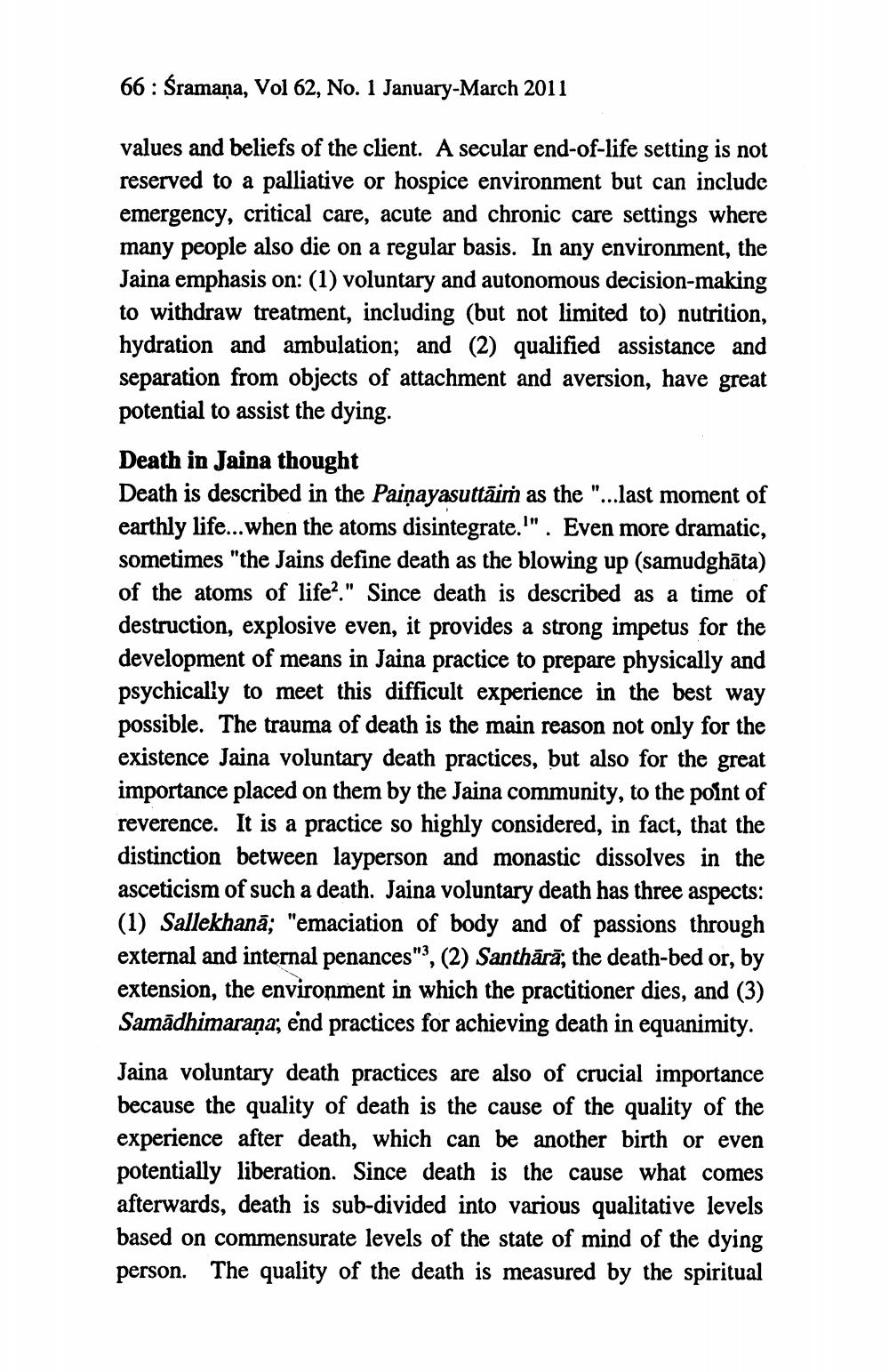________________
66 : Sramaņa, Vol 62, No. 1 January-March 2011
values and beliefs of the client. A secular end-of-life setting is not reserved to a palliative or hospice environment but can include emergency, critical care, acute and chronic care settings where many people also die on a regular basis. In any environment, the Jaina emphasis on: (1) voluntary and autonomous decision-making to withdraw treatment, including (but not limited to) nutrition, hydration and ambulation; and (2) qualified assistance and separation from objects of attachment and aversion, have great potential to assist the dying. Death in Jaina thought Death is described in the Paiņayasuttāim as the "...last moment of earthly life...when the atoms disintegrate.'". Even more dramatic, sometimes "the Jains define death as the blowing up (samudghāta) of the atoms of life?." Since death is described as a time of destruction, explosive even, it provides a strong impetus for the development of means in Jaina practice to prepare physically and psychically to meet this difficult experience in the best way possible. The trauma of death is the main reason not only for the existence Jaina voluntary death practices, but also for the great importance placed on them by the Jaina community, to the point of reverence. It is a practice so highly considered, in fact, that the distinction between layperson and monastic dissolves in the asceticism of such a death. Jaina voluntary death has three aspects: (1) Sallekhanā; "emaciation of body and of passions through external and internal penances"}, (2) Santhārā, the death-bed or, by extension, the environment in which the practitioner dies, and (3) Samādhimaraña; end practices for achieving death in equanimity. Jaina voluntary death practices are also of crucial importance because the quality of death is the cause of the quality of the experience after death, which can be another birth or even potentially liberation. Since death is the cause what comes afterwards, death is sub-divided into various qualitative levels based on commensurate levels of the state of mind of the dying person. The quality of the death is measured by the spiritual




